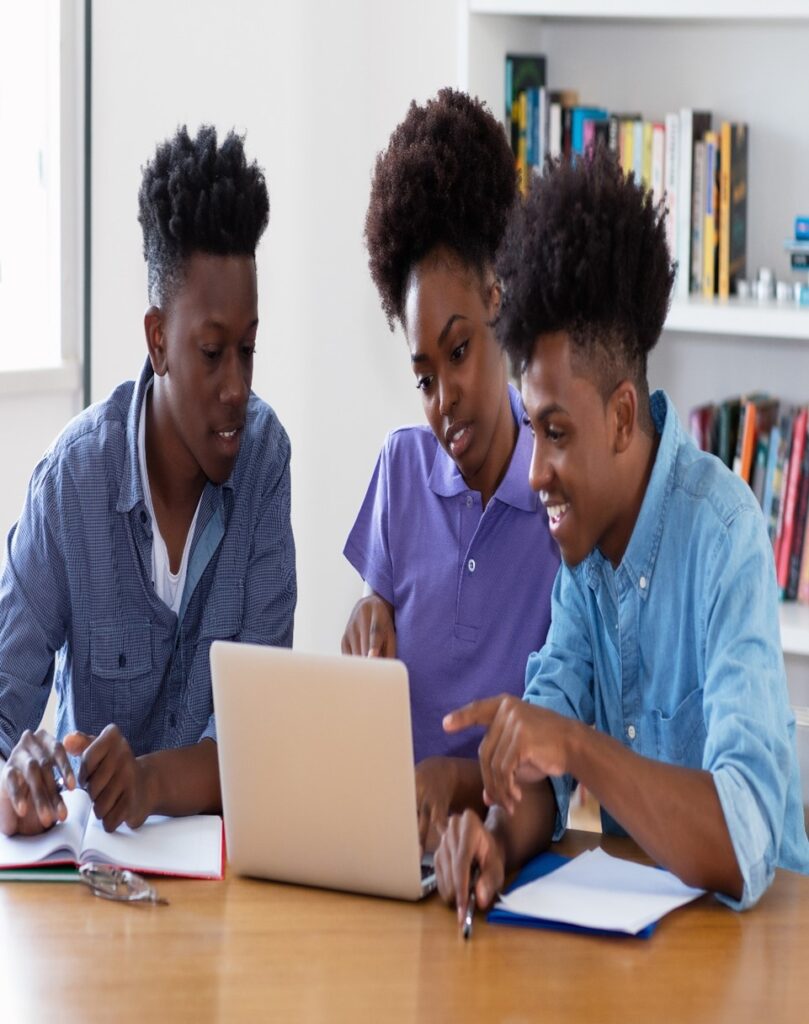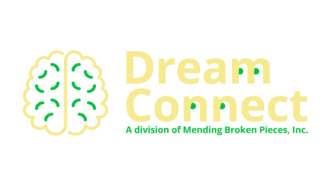Mending Broken Pieces, Inc. (MBP)
“As a nation, we must do everything we can to ensure that all students — including students experiencing homelessness and housing insecurity — are able to access an excellent education that opens doors to opportunity and thriving lives,”
U.S. Secretary of Education Miguel Cardona

"What We Do"
- MBP’s website supports local and national Homeless Youth Service Providers by listing their shelters, food banks, and other support programs and services in their resource directory to centralize help and support on a mobile platform for easier access for homeless youth.
- MBP’s free virtual programs, Empowering Dreams Initiative (EDI) and Post-Secondary Education Transition (PSET) are for unhoused Black young women aged 14-21, enrolled in high school or a GED program. Black high school students are 2.5 times more likely to experience homelessness than their white peers, Hispanic students are twice as likely, and American Indian/Alaskan Native students are 1.7 times as likely (see graph below).
Mending Broken Pieces Timeline
LaValla J. Wilson, PhD
Founder / CEO
To address the greatest risk for youth homelessness, the lack of a high school diploma or GED through mobile unhoused youth resources, and virtual academic support programing for Black homeless and at-risk young women aged 14-21 to help them remain in school and fulfill their dreams.
To help end the cycle of homelessness that crushes the dreams of homeless youth.
MBP’s Values
- Academic Excellence: striving to be the best at whatever you do academically even when the outcomes are not as you wish.
- Accountability: being responsible for or owning what you do, and a willingness to give honest reasons for your choices even when there may be personal risk.
- Fairness: free from bias or injustice or treating others in ways that honor their humanity without partiality.
- Integrity: having the ability to recognize what is right and wrong, to act on what you see, and state openly that you are acting on your understanding of the right and wrong that you see, adapted from Stephen L. Carter.
- Leadership: having the ability to influence, inspire and help others become their best self.
- Truth-telling: a willingness to give a true (accurate) account of a situation, event, or matter when asked.
Georgia’s Homeless Youth Problem!
As far back as the 2011-2012 school year Georgia experienced a growing student homelessness problem. Yet, the 2020 -2021 Annual Report of McKinney-Vento Education for Homeless Children and Youth (EHCY) suggest that the number of students experiencing homelessness in Georgia has decreased by 21.3%, this reduction occurred between the 2018-19 and the 2020-21 school years. This reduction suggest that Georgia has gotten better at housing and caring for homeless students and their families, but the pandemic’s disruption of all aspects of our education system, including data collection and reporting challenges the validity of this 21.3% reduction.
According to a May 4, 2021, Article in Featured Research, SHC Perspective from schoolhouseconnection.org, Lost in the Masked Shuffle & Virtual Void: “28% [fewer students] identified [as] homeless. . . in the fall of 2020 compared to the fall of 2019, which translates to an estimated 420,000 fewer children and youth experiencing homelessness . . . identified and enrolled.” The pandemic’s heavy toll on Black, Hispanic, and Native American communities has heightened the need for schools and communities to take action to improve the identification and outcomes for students of color (see graph below).
When homeless students are not identified, they miss out on critical educational protections and services that can stabilize their education and their lives, and they are more likely to remain out of school and underserved.
Georgia’s Homeless Students Subgroups Graph

Data Source: Georgia Department of Education Annual Homeless Survey, and The Governor’s Office of Student Achievement (for 2016-2022)
MBP's Programs and Service

Dream Connect Website
Dream Connect is a mobile, accessible, secure website of unhoused youth resources that has quality content that is updated regularly.
Dream Connect offers:
An Interactive map of Georgia’s McKinney-Vento’s Liaisons
Community Resources
High School Resources
Higher Education Resources
Language Translation
Maps with traveling directions to local recourses
MBP’s Challenge
To keep up with current technology, to regularly update Dream Connects design and content, and to make sure Dream Connect is secure for its users.
MBP’s Ask
Donations to address our challenge and volunteers to help expand our footprint to increase traffic to the site.
How to Apply to a MBP Program
- MBP programs are for unhoused and vulnerable Black young women aged 14-21, enrolled in high school or completing a GED, that has access to Wi-Fi or the Internet, a portable device (cell phone, laptop, or tablet), or a desktop computer.
The application for EDI & PSET is located below, along with a description and instructions.
The application is a fillable PDF form, and a PDF reader is needed to complete it.
The application’s instructions explain how to use the pdf form and provides a link to a PDF reader if you do not already have one. The instructions also explain how to save and return the application back to MBP.
Only completed and signed applications will be processed for admission.
Applicants will receive a notification email from MBP to (1) confirm MBP’s receipt of your application, (2) to alert you if your application is incomplete, and (3) to inform you of your acceptance into a program.
If there are any questions, you may text or call MBP at (202) 257-4275 or email us using the contact form below.

Empowering Dreams Initiative (EDI)
EDI is a free virtual program that address school instability, participation, and barriers that interfere with academic progress for Black unhoused and at-risk young women aged 14-21. Through activities focus on in class performance, self-awareness & personal development, and dream fulfillment; participants learn skills and strategies to keep them on track for high school graduation and higher education.
EDI Program:
- Instructs Black unhoused and vulnerable young women on how to locate academic resources to support high school completion or getting a GED.
- Teaches them how self-awareness, personal development, emotional intelligence, and accountability can improve academic involvement and performance.
- Uses MBP’s E-Workbook & Journal Weaponizing Your Story, to author their personal story, to record their long- and short-term goals for an action plan to create a vision board to visualize their Action Plan and their dreams.
- Uses daily journaling to document their journey to high school completion and dream fulfillment.
Duration: Six (6)-weeks (does not include the Orientation)
Offered: Fall, Spring, and Summer when school is in session
Dates & Time: Determined by the accepted young women’s availability.
Click below to Apply:


Post-Secondary Education Transition (PSET)
PSET is a free Virtual Scavenger Hunt for Black unhoused and at-risk young women aged 16-21 admitted to a college, university, technical college, or any other professional training that is unable to make a visit to their campus or program.
PSET Program:
- Uses a Pre-Scavenger Hunt Questionnaire to learn what the young women knows about their college or training program as they prepare to transition.
- Helps them Identify any learning and personal challenges they might have as they begin a new learning experience and provides soft skills, behaviors, and strategies to help address them.
- Conducts a Virtual Scavenger Hunt by:
- Providing a series of targeted open-ended questions, the young women must find the answers to, and tasks they must complete to connect them to essential personnel, resources, and critical support services on their campuses or within their program.
Duration: Six (6)-weeks (does not include the Orientation)
Offered: Fall, Spring, and Summer when school is in session
Dates & Time: Determined by the accepted young women’s availability.

